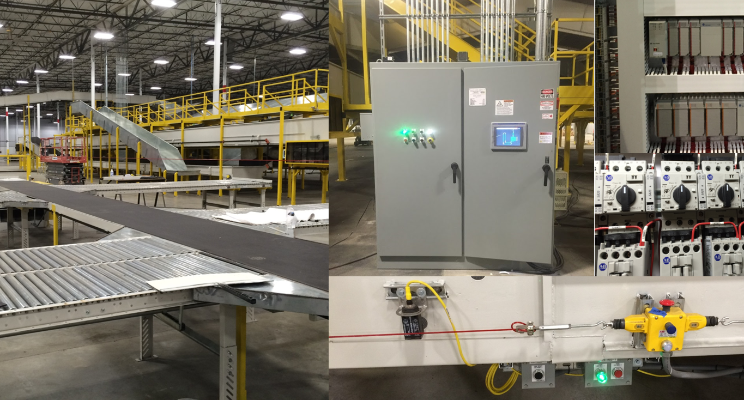
Successful projects require effective project management, and with multiple management styles at your disposal, how do you choose the most effective if you’re a controls engineer?
The most common approach is Waterfall. Think of a project schedule where each successive task requires the preceding task to be completed first. This traditional management style is a three-stage process. First, you Design. Next, you Build. Then, you Test.
Even though Waterfall is used most frequently, this doesn’t mean it’s the most suitable approach. In controls engineering, CHANGE is inevitable and constant. Project scope is frequently redefined, and design and installation tasks take longer or shorter than expected. For this reason, Agile is more conducive than Waterfall for controls projects.
What is Agile?
In short, Agile is an iterative process. It includes the three steps in Waterfall (Design, Build, Test), but these steps are repeated multiple times in Sprints. These are time based mini projects within an overall project. The goal of a project is called the Story. A backlog of tasks must be completed to fulfill this Story, and so before each Sprint, a set of these tasks are strategically chosen from the backlog and assigned to be completed.
Three Major Differences Between Agile and Waterfall
First, Agile is flexible while Waterfall is rigid. In Agile, you can go back and complete a task by simply moving it into the next Sprint. Waterfall, however, does not allow you to move backwards without changing the remaining tasks in the schedule. This is highly problematic when change inevitably occurs.
The second major difference involves customer interaction. In Agile, interaction is constant while in Waterfall, customer interaction varies. During testing, interaction is often high, but during development, it is often low. This lack of communication in Waterfall can cause a lot of re-work because mistakes or changes in scope are discovered much later.
A third major difference involves leadership roles. Waterfall has a traditional project manager who manages timeline and resources. Agile, on the other hand, has a scrum master, who focuses more on the team like a coach. A scrum master facilitates the so-called scrum, a collection of individuals who work together in the Sprint, by removing obstructions and monitoring individuals progress.
How Does This Apply to Common Controls Engineering Tasks?
Controls Design usually follows a common order. First electrical schematics are completed, then PLC programming, and then HMI programming. Waterfall sees a project as a sequence and waits for each of these design tasks to reach a certain stage of completion before starting the next task. An Agile solution views a project as multiple smaller projects. Each of these smaller projects designs, builds, and tests a “product”, even if it is not 100% complete from a Waterfall perspective. For example, in a Sprint, a PLC programmer can develop the tag database needed for an HMI, so the engineer designing the HMI screens can begin developing the HMI application sooner. By facilitating the development of another design application earlier, there is more time available for inevitable changes and adjustments for both PLC and HMI applications. These early “products” are sent to the customer for feedback immediately. This also creates the benefit of discovering mistakes or changes in scope sooner. An example of this is a device layout sent to the customer prior to completing an entire electrical package. Waterfall would wait until the end of the design phase to ask for this feedback.
The benefits of using Agile are also apparent when applied to installation tasks. Commissioning engineers and electrical subcontractors work as a team to deliver the project on time. Sprints can also be used during install to deliver a “product” early that will allow others tasks to begin. “Product” for installation includes things like running conduit and terminating field devices. For example, an electrical installer can focus their attention on terminating devices in a specific area of a system so it can be turned over for checkout. The commissioning engineer can then begin IO checkout and acceptance testing while the electrical installer continues terminations in a different area. This coordination results in shorter installation schedules, earlier startups, and more time at the end and throughout the project for punch list items.
The over-arching benefit in the Agile vs. Waterfall debate comes back to change. By working in sprints, you can deliver “product” early so that changes to scope can be made. By communicating with the customer constantly, you reduce risk because changes are discovered through feedback. Unlike Waterfall, Agile does not see change as a hindrance. Agile harnesses change and turns it into a competitive advantage.
Anthony Osbourne, P.E. - Director of Engineering
Anthony joined Spring in 2016 and has led projects for multiple parcel customers. Over the course of a project, he has completed engineering work such as design, programming, and system start-up while also overseeing electrical installers and procurement.
Prior to Spring, he worked for a systems integrator in Birmingham, AL with projects in the foundry and advanced material industries. He served as a controls engineer where he designed panels, wrote PLC code, created HMI applications, and commissioned systems.

